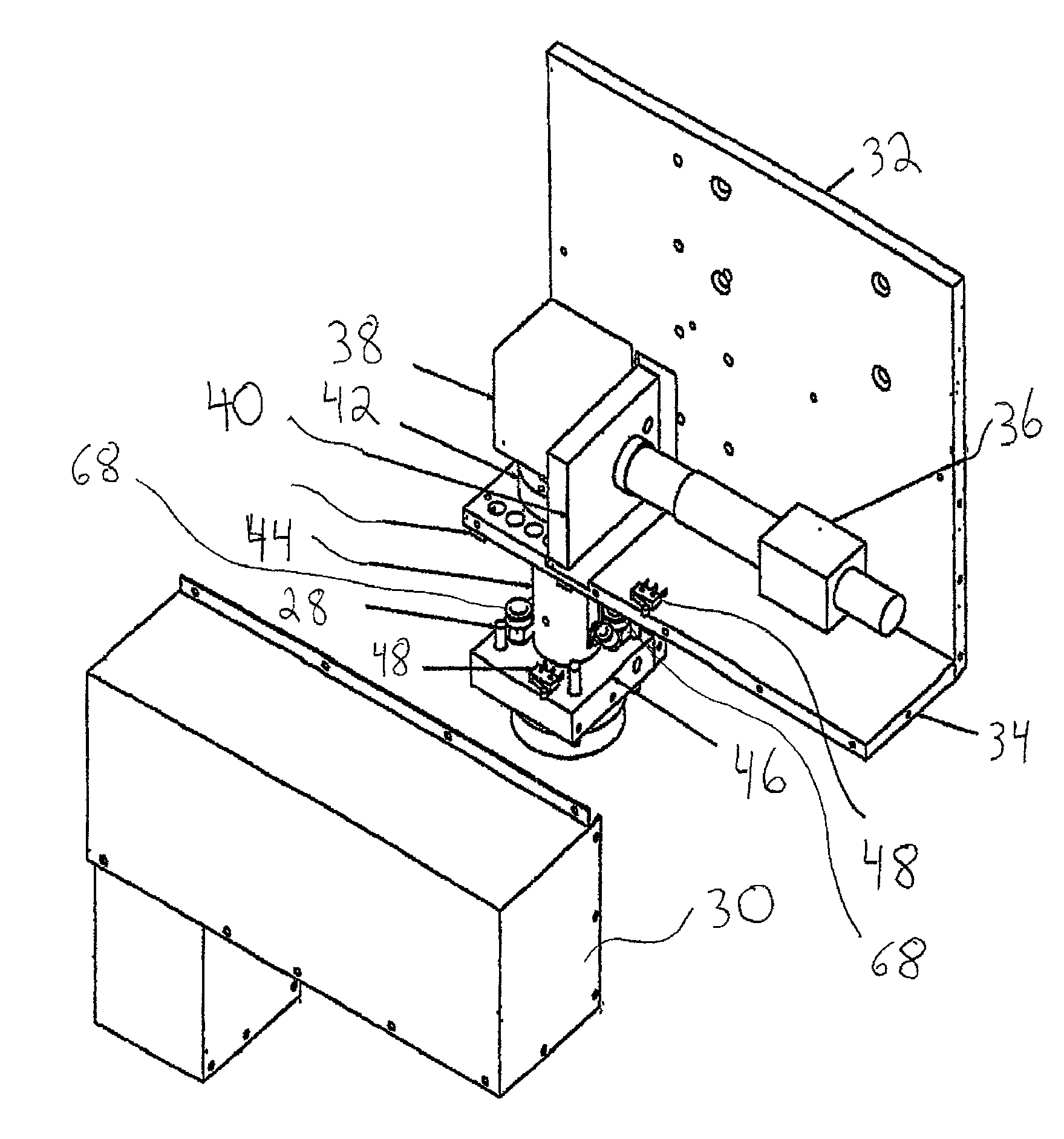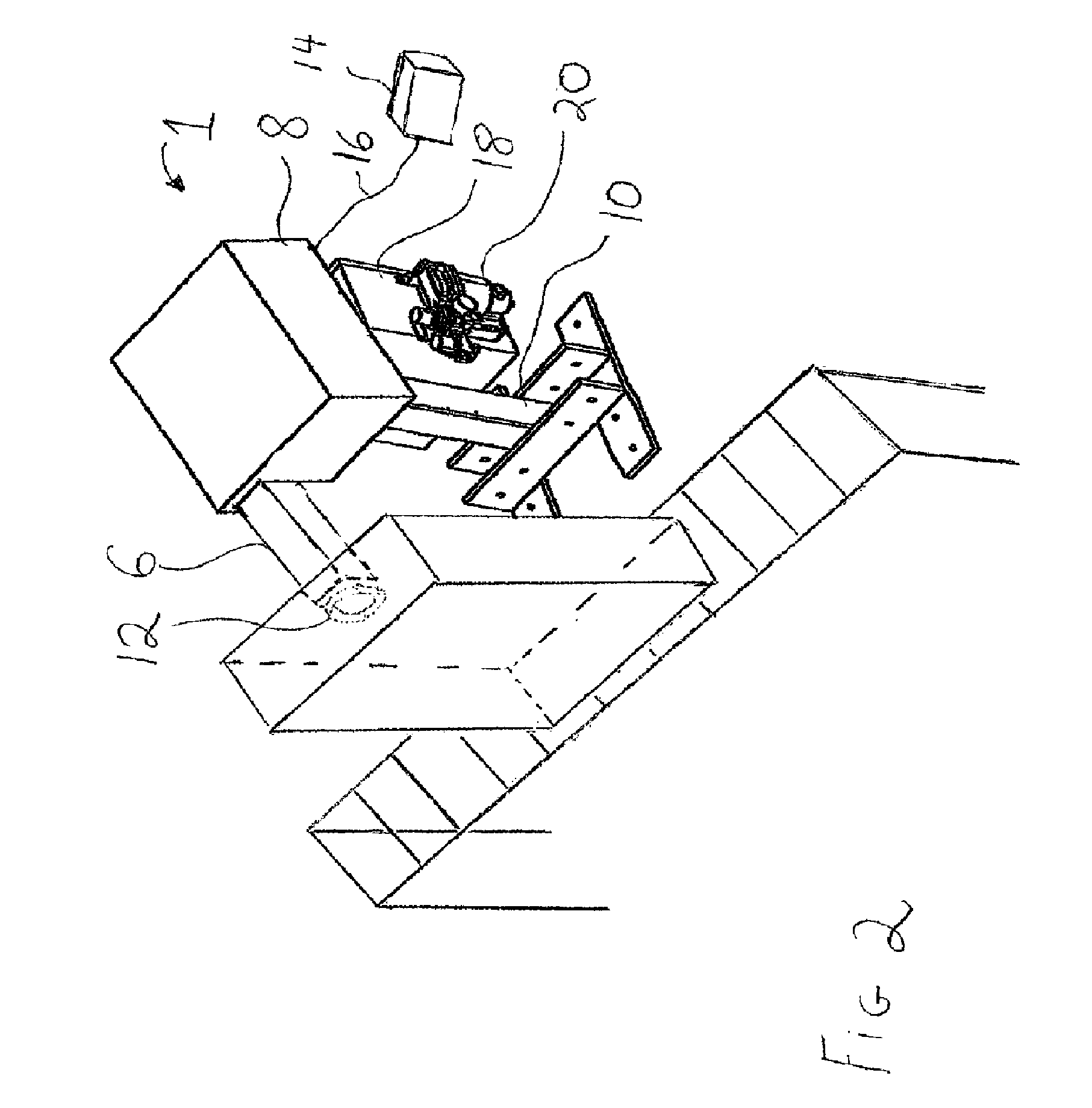Laser marking system
a laser marking and marking system technology, applied in the field of laser marking devices and systems, can solve the problems of consuming much valuable floor space/area, escaping laser light, damaging other surfaces, etc., and achieves the effects of less integration and assembly time, minimal footprint area, and low overall cos
- Summary
- Abstract
- Description
- Claims
- Application Information
AI Technical Summary
Benefits of technology
Problems solved by technology
Method used
Image
Examples
example 1
[0112] A laser generator was used to generate a laser beam from a diode pumped fiber of the wavelength of about 1064 nm having an intensity of about 20 watts. A part, in this case an aluminum housing / case of an automotive transmission, was brought by a conveying line in front of the laser marking system and device of the present invention. The transmission case was stopped in front of the safety seal assembly for a total period of about 25 seconds. The safety seal assembly was advanced via a pneumatically activated slide towards the transmission case and made physical contact with the part, with forward advancement stopped when at least one proximity switch and the sealing head made contact with the surface of the transmission case to be marked. Upon making contact with the transmission case, the transmission case together with the inner vacuum cup formed the marking chamber, while the transmission case together with the inner and outer vacuum cups formed the vacuum chamber. A vacuu...
PUM
| Property | Measurement | Unit |
|---|---|---|
| wavelength | aaaaa | aaaaa |
| vacuum | aaaaa | aaaaa |
| movement | aaaaa | aaaaa |
Abstract
Description
Claims
Application Information
 Login to View More
Login to View More - R&D
- Intellectual Property
- Life Sciences
- Materials
- Tech Scout
- Unparalleled Data Quality
- Higher Quality Content
- 60% Fewer Hallucinations
Browse by: Latest US Patents, China's latest patents, Technical Efficacy Thesaurus, Application Domain, Technology Topic, Popular Technical Reports.
© 2025 PatSnap. All rights reserved.Legal|Privacy policy|Modern Slavery Act Transparency Statement|Sitemap|About US| Contact US: help@patsnap.com



